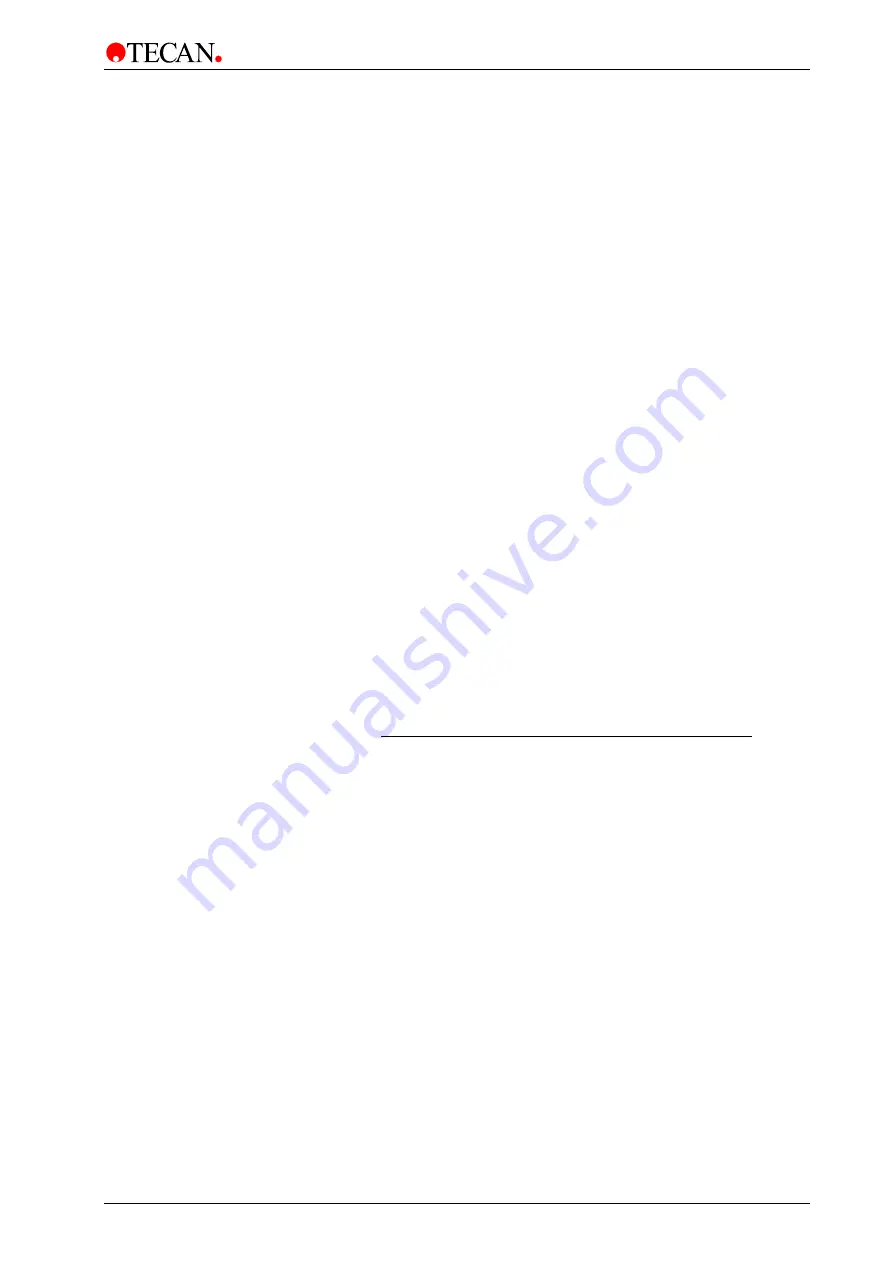
12. Performance Testing / Quality Control
2004-10
Technical Manual for sunrise RC, TW, TS, TC, BC, 6F No. T 137 302 Rev No. 1.1
12-11
12.4.3 Instrument
Linearity
The instrument's linearity can be checked by using a dilution series of a solution.
For example: a dilution series of Methyl Orange in 0.1 % Tween 20 solution for
measurements at 492 nm.
For other wavelengths, different solutions must be used.
The diluted solutions are then measured on a reference spectrophotometer.
The reference spectrophotometer should be specified higher by the factor 10, at
least by the factor 2, than the Absorbance Reader.
A graph of OD against predicted concentration is drawn and the best straight line
through the points is then plotted.
The absorbance values obtained for the dilutions are then compared with the
graph and a calculated concentration of the dilution, is determined from the
straight line.
250 microliters of each dilution are then pipetted into the microplate, a minimum
of at least two samples should be used for each dilution to reduce the errors
caused by pipetting.
Make sure that the instrument is using the accuracy measurement mode.
The microplate is then measured and a linear graph of OD against concentration
is drawn from the average of the measured OD values and the predicted
concentration for each dilution.
The absorbance values obtained for the dilutions are then compared with the
graph and a calculated concentration of the dilution is determined from the
straight line.
The calculated concentrations are then compared from both the
spectrophotometer and the instrument.
The percentage inaccuracy of the instrument is calculated by the formula
100
x
otometer)
(spectroph
cCONC
otometer)
(spectroph
cCONC
-
t)
(instrumen
cCONC
=
inaccuracy
%
cCONC = calculated concentration
Example for a standard instrument
The inaccuracy should be not greater than:
Using standard filter
492 nm
0.000 - 2.000 Abs
+/- 1 %
2.000 - 3.000 Abs
+/- 1.5 %









































